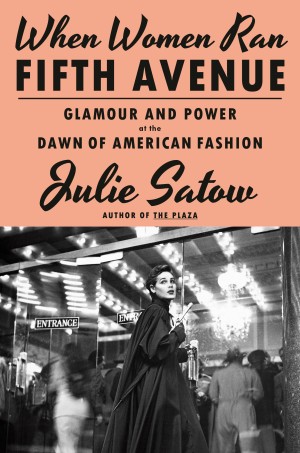Tabloid sensation Fredericka Mandelbaum headed her own crime syndicate in New York City from the 1870s onward, specializing in “fencing” stolen properties and financing bank burglaries. A penniless immigrant barely twenty years earlier, Mrs. Mandelbaum entertained a varied crowd at her dining table: politicians and police, upper-class business leaders and their fashionable wives, and some of her tonier underworld accomplices. She was a Jewish wife and mother and reportedly an enthusiastic member of her local synagogue.
Drawing partly on Rona Holub’s biographical research, Margalit Fox sets Mandelbaum’s life in the larger context of nineteenth-century crime. Readers learn about the development of police departments, the founding of Pinkerton’s, safecracking techniques, the corruption of Tammany Hall, the exploits of eighteenth-century mega-criminal Jonathan Wild, the Tiffany’s “gum trick,” and a number of improbable scams.
This “local color” helps Mrs. Mandelbaum come alive, which is necessary because the actual details of her life are so scarce. We know that Mrs. Mandelbaum was heavyset and favored traditional Victorian dress, swathing herself in yards and yards of heavy black silk. Her home was one floor above her business (important for working thieves’ hours) in “Kleindeutschland,” a neighborhood on Manhattan’s Lower East Side. She belonged to the German Jewish Rodeph Sholom synagogue in New York; later, in Canada, she joined Anshe Sholom. She insisted that her daughter have a Jewish burial. She had a sharp business sense and made a lot of money.
That we know little else about her is not surprising. Mrs. Mandelbaum didn’t hobnob with the literati, so we have only jaundiced press accounts of her doings. She wasn’t an upper-class robber baron like Andrew Carnegie, endowing libraries, so there are no details of her philanthropy. There’s not much for a biographer to work with, so Fox gives us Mrs. Mandelbaum’s world instead — which is very entertaining.
The problem comes at the end, when Fox asks the big question: how did Mrs. Mandelbaum go from struggling immigrant in the 1850s to New York City crime boss twenty years later? Fox argues that as a Jewish woman, Mrs. Mandelbaum was almost expected to work outside the home to support her scholarly husband. German Jewish wives in particular were famously entrepreneurial. But Mrs. Mandelbaum was a working-class woman married to a peddler; both labored hard to feed their family. Would she have cared about social approval? Fox also notes that Mandelbaum’s timing was perfect. She entered the world of crime before it was modernized and professionalized, which would have blocked female advancement. Yet modernization in many workplaces actually led to women replacing men (in secretarial work, for example) — so maybe that’s not the answer, either.
After being immersed in Mrs. Mandelbaum’s life and times, readers may decide there’s really no need to explain her success; she was simply one of a kind. It’s a tribute to Fox’s storytelling talents that this unique and mysterious woman has come to life.
Bettina Berch, author of the recent biography, From Hester Street to Hollywood: The Life and Work of Anzia Yezierska, teaches part-time at the Borough of Manhattan Community College.





